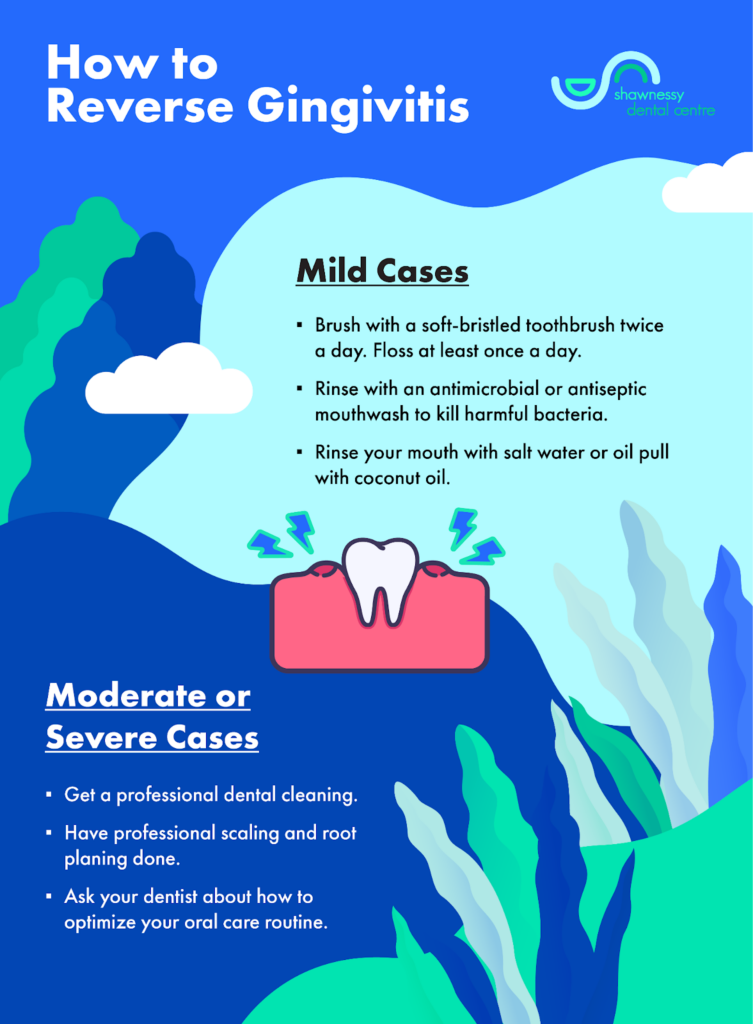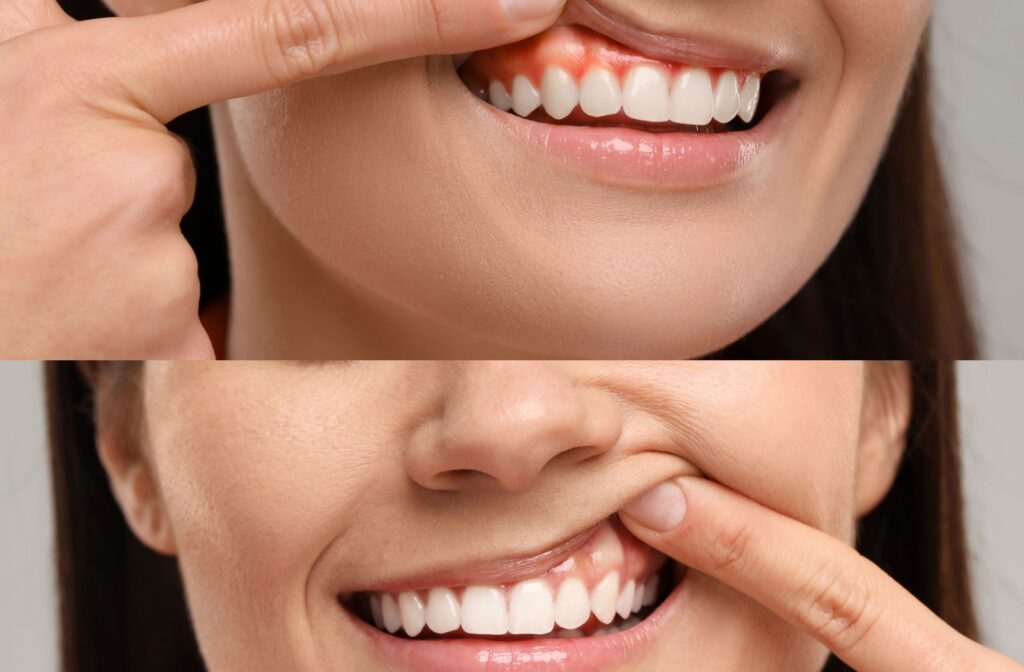Gingivitis is common but often underestimated. Characterized by swollen gums and bleeding during brushing or flossing, it’s the earliest stage of gum disease. Fortunately, it’s reversible with proper care.
Early stages of gingivitis can be cured with better oral care habits, antibacterial mouthwash, and a healthy diet. For later stages, professional treatments like dental cleanings, scaling, and antibiotic therapy may be necessary.
Left untreated, however, gingivitis can progress to more severe oral health issues. If you notice signs of gingivitis, visit your dentist for advice on how to stop it from progressing.
Understanding the Causes of Gingivitis
To effectively treat gingivitis, it’s important to know what causes it.
Plaque & Tartar Buildup
Plaque forms when bacteria mix with sugary and starchy foods. Without proper brushing and flossing, plaque can harden into tartar, irritating the gums and facilitating an environment for more bacteria to thrive.
Poor Oral Care Routine
Irregular brushing, skipping flossing, or failing to clean teeth properly can lead to the accumulation of bacteria that leads to gingivitis.
Smoking or Tobacco Use
Tobacco products make it harder for gums to heal and fight infections, increasing the risk of gingivitis.
Hormonal Changes
Pregnancy, menstruation, puberty, and menopause can make gums more sensitive, increasing susceptibility to gingivitis.
Certain Medical Conditions & Medications
Diabetes, cancer treatments, or medications that cause dry mouth can also promote gum inflammation.
Recognizing Gingivitis Symptoms
How do you know if you have gingivitis? Here are the most common signs to watch for:
- Red, tender, or swollen gums
- Bleeding when brushing or flossing
- Bad breath that doesn’t go away
- Receding gumlines or gums that appear to be “pulling away” from teeth
- A soft, spongy feeling in gum tissue
If you’re experiencing any of these symptoms, it’s essential to act quickly to avoid severe gum disease (periodontitis).

Home Remedies for Gingivitis
The first step in curing gingivitis often starts at home. While mild cases can be managed effectively, these remedies should be combined with consistent oral hygiene practices and routine checkups with your dentist.
Brush & Floss Regularly
Use a soft-bristled toothbrush and fluoride toothpaste twice a day. Focus on the gumline, where plaque tends to live. Flossing daily helps removes plaque and debris between teeth that your toothbrush often can’t reach.
Use Antibacterial Mouthwash
Rinse with an antimicrobial or antiseptic mouthwash to kill harmful bacteria and reduce inflammation. Look for mouthwash containing hydrogen peroxide or chlorhexidine.
Saltwater Rinse
A natural remedy for reducing inflammation is rinsing with warm salt water. Mix half a teaspoon of salt into a cup of warm water, rinse your mouth, and spit it out.
Apply Coconut Oil
Coconut oil pulling can help reduce bacteria in the mouth. Swish a tablespoon of coconut oil in your mouth for 10–15 minutes before spitting into a trash bin.
Eat a Healthy Diet
A balanced diet rich in vitamins C and D, along with calcium, can strengthen your gums. Avoid sugary and processed foods that encourage bacterial growth when you can.
Professional Treatments
For moderate or severe cases of gingivitis, it’s essential to seek care from a dental professional.
Professional Dental Cleaning
Dental hygienists can help remove the plaque and tartar that regular brushing can’t. Regular cleanings (every 6 months) are one of the best defences against gum inflammation.
Scaling & Root Planing
These treatments help clean and smooth the surfaces of the teeth and roots below the gumline to remove plaque, tartar, and bacteria that contribute to gum disease.
Antibiotic Therapy
Your dentist may prescribe antibiotics to treat severe infections and promote healing.
Customized Oral Hygiene Guides
Dental hygenists can teach you how to level-up your brushing and flossing routine to support long-term oral health. Early treatment is key to reversing gingivitis and preventing it from becoming periodontitis.

Preventing Gingivitis
Prevention is always better than cure. To keep your gums healthy and avoid future issues, make these preventative measures part of your routine:
- Brush and floss daily with proper technique
- Visit your dentist for regular checkups and cleanings
- Avoid smoking and tobacco products
- Stay hydrated to prevent dry mouth
- Maintain a healthy, balanced diet
- Replace your toothbrush every 3–4 months
Get Tailored Advice for Better Gum Health
Spotting the signs of gingivitis early can save you from long-term dental issues and invasive treatments. If you’re dealing with symptoms of gingivitis or want a professional cleaning to eliminate plaque buildup, we’re here to help.
The team at Shawnessy Dental Centre is dedicated to providing a comfortable, personalized experience to help your gums stay healthy and your smile bright. Book your appointment today.


